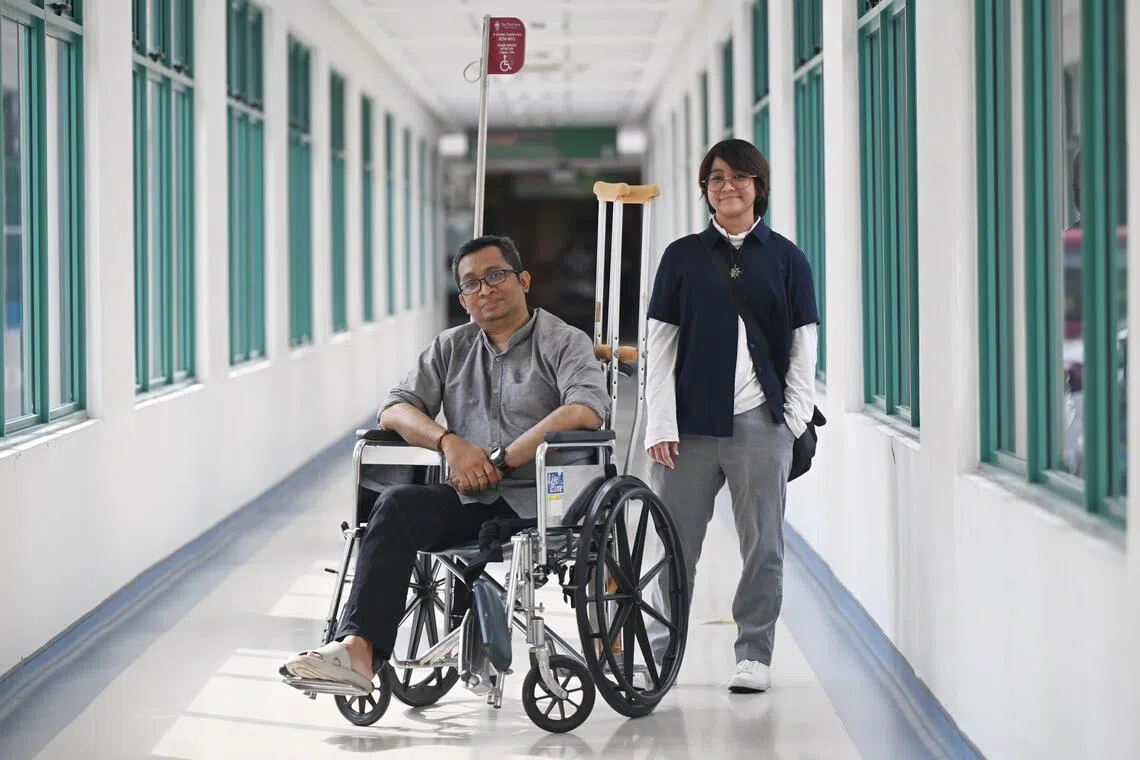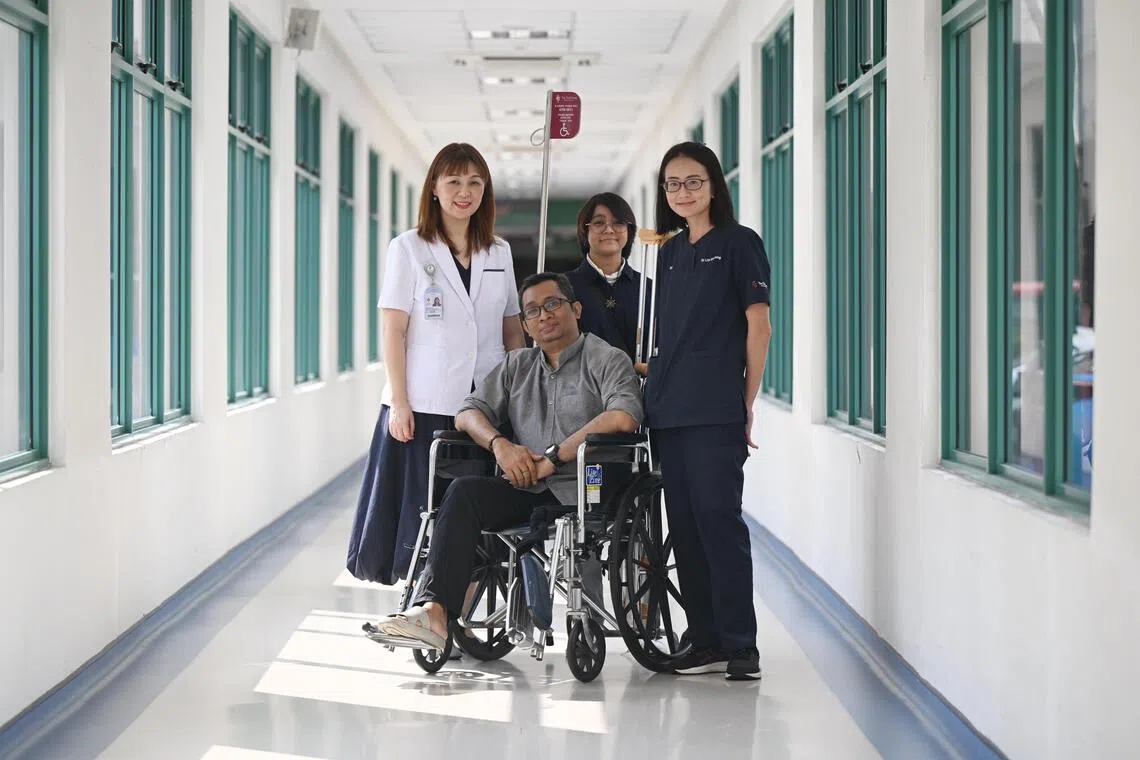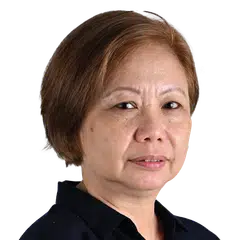Medical Mysteries
Man learns of his rare genetic condition only after daughters are diagnosed
Medical Mysteries is a series that spotlights rare diseases or unusual conditions.
Sign up now: Get ST's newsletters delivered to your inbox

If it were not for his daughter Nurul Naqisyah Mohamad Shahrel's diagnosis, Mr Mohamad Shahrel Hamid would not have discovered that he has haploinsufficiency A20.
ST PHOTO: AZMI ATHNI
Follow topic:
- Mr. Shahrel suffered for years with unexplained symptoms; finally, his daughter's diagnosis of haploinsufficiency of A20 (HA20) led to his own diagnosis.
- The diagnosis of HA20, a rare genetic condition causing inflammation, was identified in Mr. Shahrel and his two daughters, ending a long struggle for answers and treatment.
- Early diagnosis in the youngest daughter, Noura, prevented years of suffering, highlighting the importance of genetic testing for unexplained symptoms.
AI generated
SINGAPORE – Mr Mohamad Shahrel Hamid has two rare conditions that have caused him much suffering, including the loss of his left leg. But he could have been spared the pain of one of the conditions if it had not been diagnosed only many years later, after he became a father to two girls who inherited the condition from him.
The 45-year-old spent his childhood and teenage years plagued by unexplained fevers, ulcers and diarrhoea.
“I was a constant visitor to the hospital, but I was given medication only to control the symptoms. Once they were managed, I could go home, only for them to start again soon,” the general worker said.
Then, during his national service, he discovered a painful swelling in his left ankle.
“After seeing the doctor and taking medication, the pain went away, but the swelling stayed. Since there was no pain, I carried on life as usual,” he said.
But the pain returned in May 2024, this time worse than ever. Mr Shahrel, a father of five, could not put any weight on his left leg.
“I was referred to Tan Tock Seng Hospital (TTSH), where doctors found a benign tumour in my ankle. It was removed in July, but two months later, it grew back and spread to behind my knee, in my groin area and below my stomach,” he said.
Mr Shahrel was asked to amputate his leg to save his life “but at 44 and providing for my wife and five children, I could not”, he said.
He was then given oral chemotherapy to help subdue and shrink the tumour.
It did not work.
Dr Lim Xin Rong, a senior consultant at TTSH’s department of rheumatology, allergy and immunology, told The Straits Times that the growth on Mr Shahrel’s ankle was a tenosynovial giant cell tumour, which is rare.
“It affects the lining of joints and tendons. Most tenosynovial giant cell tumours stay localised and do not spread to other organs, but in Mr Shahrel’s case, the tumour regrew and spread to the lymph nodes in his groin,” she said.

(From left) Ms Lim Chia Wei, principal genetic counsellor at TTSH’s Centre for Precision and Genomic Medicine; Mr Mohamad Shahrel Hamid and his daughter Nurul Naqisyah Mohamad Shahrel; and Dr Lim Xin Rong, a senior consultant from TTSH’s Department of Rheumatology, Allergy and Immunology.
ST PHOTO: AZMI ATHNI
The medication helped to control Mr Shahrel’s fevers, oral ulcers, gut problems and blood abnormalities, but it could not stop the growth of the tumours in his ankle and lymph nodes.
After the lymph nodes over his groin ruptured in November 2024, resulting in serious bleeding and infection, doctors had to remove part of the pelvis together with his left leg in March 2025.
Mr Shahrel lost all hope, especially as his two daughters were also suffering the same symptoms he had faced in his youth. But a lifeline was just around the corner.
Ms Nurul Naqisyah Mohamad Shahrel, 18, and her younger sister Noura, eight, also suffered from the unexplained fevers, ulcers in the mouth and diarrhoea. Both girls had become frequent visitors to KK Women’s and Children’s Hospital (KKH).
After Ms Nurul was admitted to KKH with a persistent fever in October 2024, Dr Bianca Chan, a consultant with the hospital’s rheumatology and immunology service, suspected an underlying genetic autoinflammatory condition, and genetic testing was planned within three days.
Ms Nurul’s report showed a genetic mutation, confirming the doctor’s suspicion. She was diagnosed with haploinsufficiency of A20 (HA20) – a rare condition in which the immune system loses the A20 protein and becomes overactive, leading to excessive inflammation throughout the body.
Dr Chan said HA20 is a fairly new condition, recognised only recently as a disease entity. The first case was described in medical literature in 2016, and fewer than 200 cases have been reported worldwide as at July 2025.
“Even in a family who all have the same genetic mutation, symptoms can vary in severity. As HA20 can be passed down, (and) multiple members of the same family can be affected, as in this case,” she said.
“The difficulty in making a diagnosis and the rarity of the condition explain why Mr Shahrel’s family remained undiagnosed for so long despite him being symptomatic with recurrent ulcers; and Nurul (having the same) recurrent ulcers and fevers, and being admitted many times since March 2016, when she was eight years old,” she added.
Dr Lim said: “A late diagnosis of HA20 leads to more suffering for the patients. They may go through years of struggling with unexplained health problems without a unifying diagnosis... Uncontrolled inflammation over time may cause irreversible damage to organs such as the joints, gut or kidneys.”
With the help of Ms Nurul’s genetic report, Mr Shahrel was tested at TTSH and found to have HA20. Although the condition can cause swollen lymph nodes, there is no certainty that Mr Shahrel’s tumour was related to his HA20.
With a confirmed diagnosis, Ms Nurul, her sister and her father have been on appropriate anti-inflammatory treatment since late 2024.
Noura, Mr Shahrel’s youngest child, had also been brought in for assessment and was confirmed by targeted gene testing to have the same mutation and disease.
She started her treatment in January 2025, after only a few months of symptoms. Doctors say the treatment will help Noura avoid the years of suffering her sister and father went through while waiting for a diagnosis.
The two sisters are at KKH, managed jointly by Dr Chan and another rheumatologist, Dr Teh Kai Liang.
Having watched what her father went through, including his amputation, Ms Nurul said she was thankful the doctors were able to identify her condition as well as that of her younger sister and stave off further onset.
Ms Nurul had taken time off from school to take care of her father, but she hopes to return to her studies so she can pursue her “dream of becoming a physiotherapist to help others like the doctors and nurses at KKH who helped me”.


